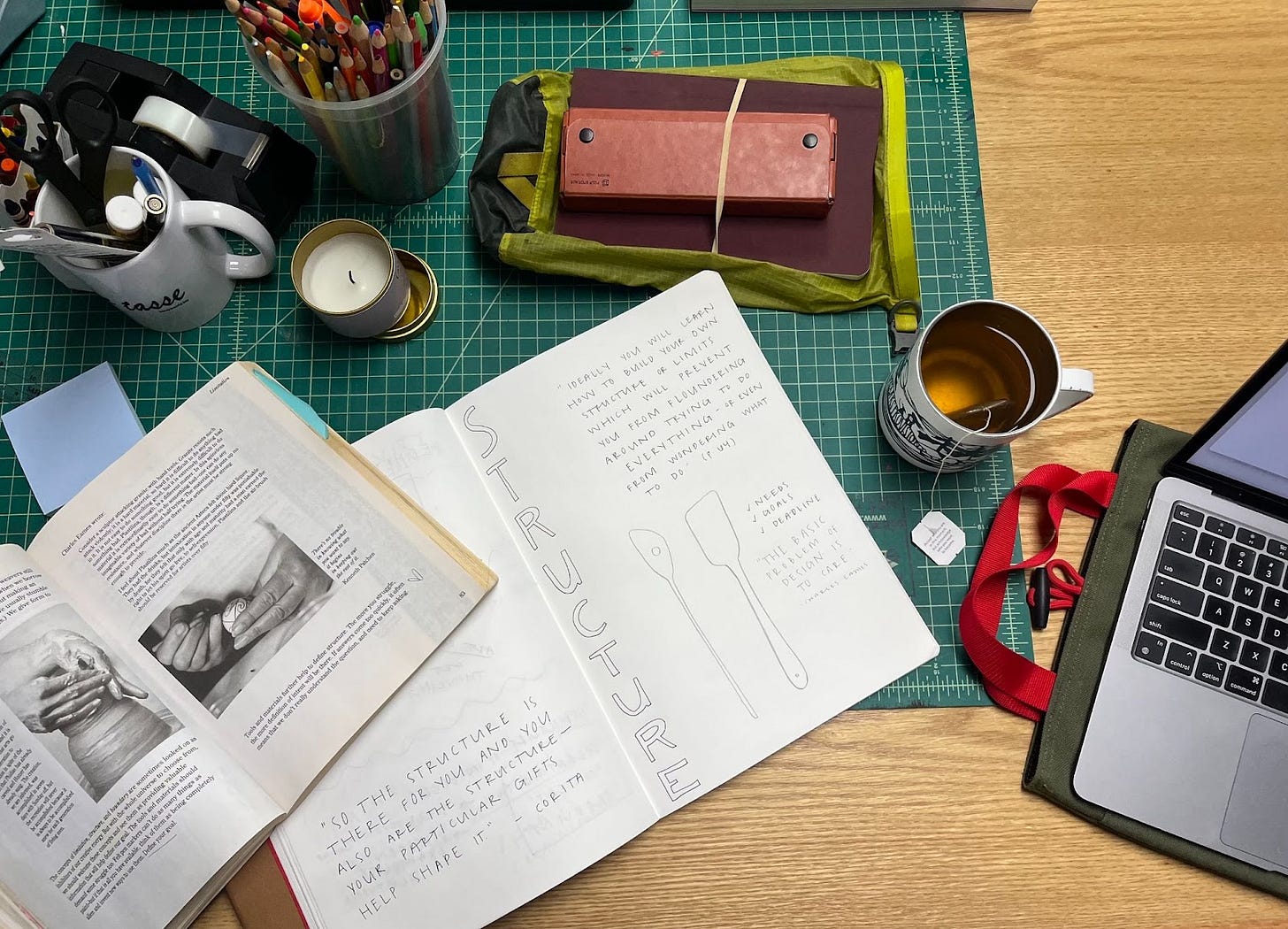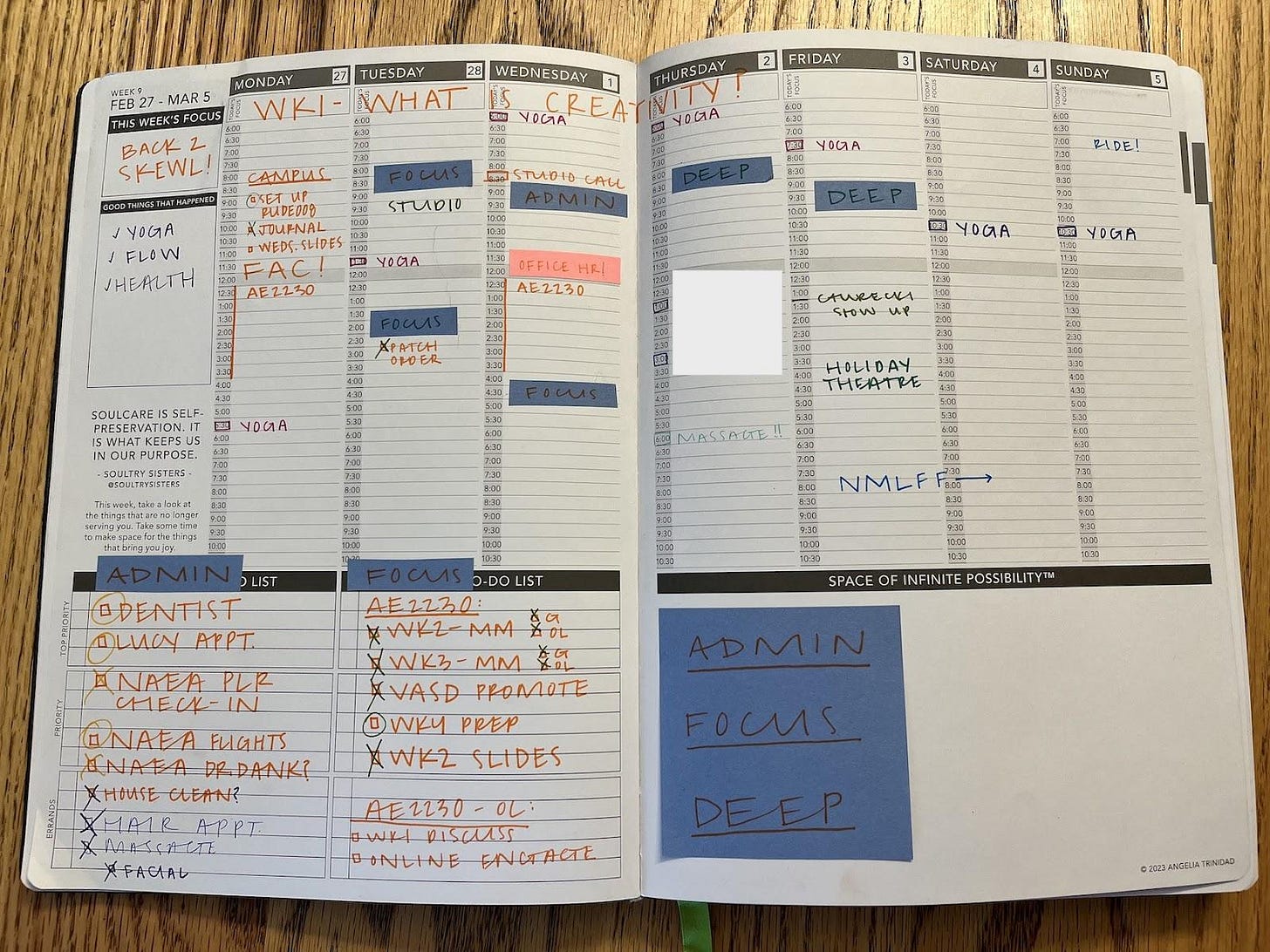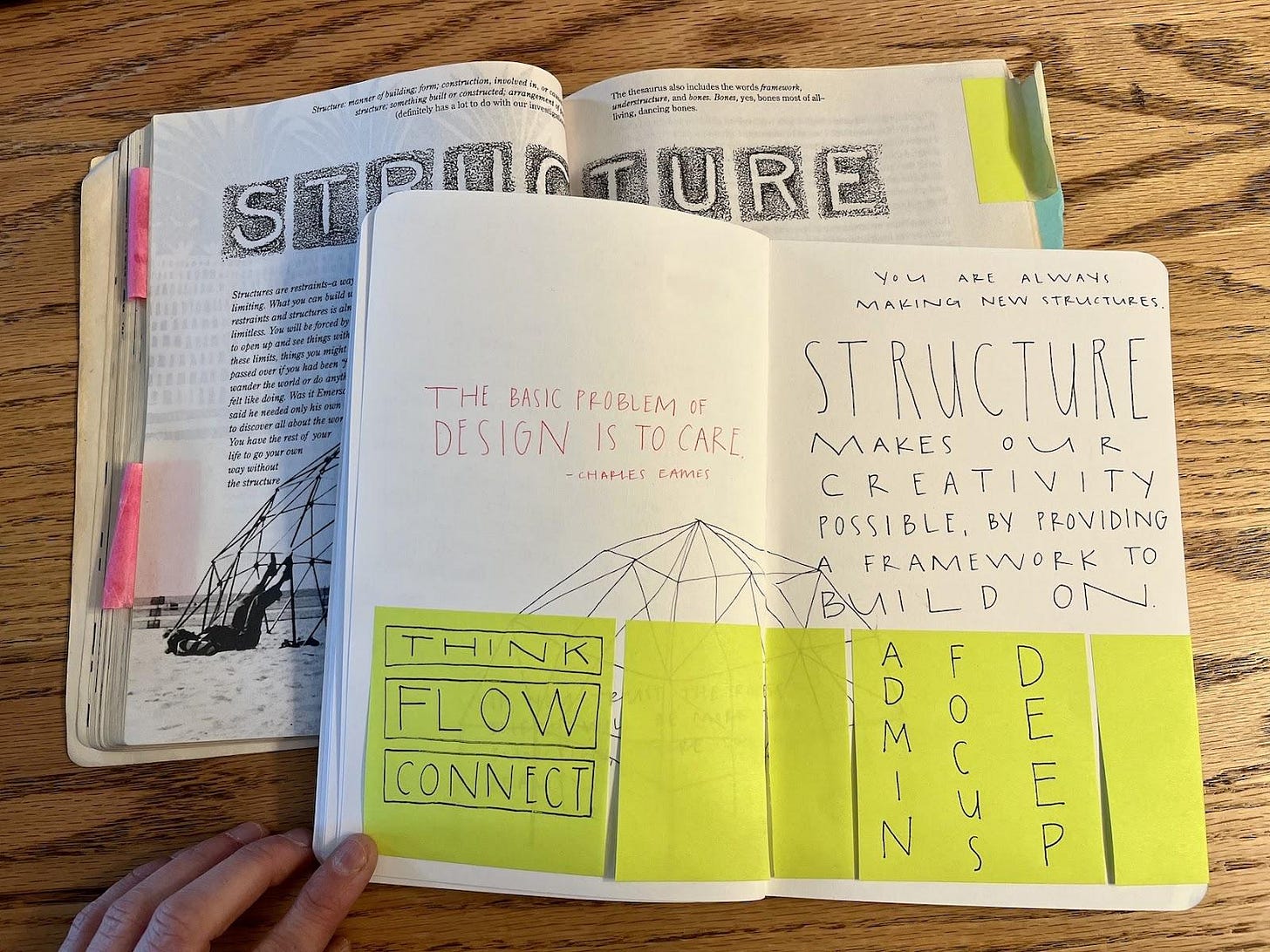“Ideally you will learn how to build your own structure or limits which will prevent you from floundering around trying to do everything - or even from wondering what to do” (p. 64).
This statement from Corita hits right at the core I find many creatives face once they leave the safety of the art classroom or workshop. Without assignments or an enthusiastic art teacher (aka me) providing them structure, many students find themselves at a big moment of growth - what do I create now?
There are many ways to view structure when it comes to our creative lives. Structure is found in deadlines for projects, organizing our calendars, personal goals, the limitations of our tools, and even how you may approach the compositions of your visual journal. So here you may be thinking, but how will I know what structures to make? Often we want the structure to be given to us, there’s comfort in knowing the plan to follow - I get it. As a teacher, I see the challenges students face when they are given boundaries for working in open-ended assignments. It’s why I purposefully don’t include examples of final work, because their final work hasn’t been made yet - there is no one right answer.
Corita’s presenting to us in this chapter a deeper connection in shaping the frameworks that fit us each uniquely as creatives, and to top it off she reminds us that “you are always making new structures” (p. 65).
In my own practice as an artist and educator, I love structures. One way of framing that helps me find clarity in my creative work is from Cal Newport’s book Deep Work: Rules for Focused Success in a Distracted World. A few years ago, I felt myself reaching a point where I felt like I was constantly task switching and not really feeling great about my divided creative attention. Newport defines “deep work” as the act of focusing without distraction on a cognitively demanding task. My constant trying to do all the things was wearing me down, and I deeply craved the time spent in deep work. So I tried on his habit of time blocking, and in Corita fashion - built it for me.
I worked on dividing my work into three main buckets; Admin, Focus, Deep. Then I “assigned” various tasks into what category they fit - for example: responding to emails is admin work, while writing or working on creative problems is deep focus. Further, I reflected what time of day worked best for these various times. I prefer to complete deep work in the mornings when I feel energized and fresh, saving my admin work for the afternoons when I don’t feel that same energy. This structure helps me curb my multi-tasking tendency while staying flexible to what my week may look like.
Here’s an example of my own Passion Planner (another great structure). I’ve kept this style of weekly calendar for almost ten years now.
When reading this chapter, I can’t help but think Corita is talking directly to educators. She makes many connections to how structure is an important part of creativity in learning - urging educators to see structures as the framework to support students creativity. By pointing to a common confusion of structure with discipline, she’s asking teachers to be intentional with their structures to help in creative thinking, not disciplining students into orderly behavior.
Connecting to the creative process, an art teacher is able to structure their units and individual lesson plans as a way to lead students through desired thinking and outcomes. This “part of the job” has always felt extra fun to me - you mean, I can apply my own understandings of creativity to help someone else think creatively for themselves? That’s a high I continue to chase in every written post, lesson, and workshop I create.
From the importance of deadlines to assignment design, Corita offers these insights,
“In my projects and assignments I work very hard on structures within which students can work - structures that will be supporting enough - a kind of scaffolding” (p. 71).
“Such a structure–formed out of the process of defining goals and then achieving them–almost guarantees success” (p. 77).
creative exercise: create a calendar
I love the assignment on page 87 to make a calendar. In my teaching of this chapter, students have had all sorts of examples for calendars - weekly grocery/meal planning calendars, a road trip calendar, and even a calendar designed for dyslexia - I really enjoy how this assignment gets you thinking about structures we create.
timeframe: 10-20 Minutes
materials: visual journal and favorite mark-making items.
steps:
Start by asking yourself - what you need a structure for?
Design - make a list of specifics needs for your structure, this will help you know what you’re designing for.
Draw it out visually, it’s totally fine if it doesn’t look like a typical calendar - in fact, I hope it doesn’t.







Loved the discussion yesterday about the book. This structure chapter is hitting home for me. As a teacher I’m so much more skilled at intuiting/setting structure for others, but maybe less skilled at applying it to my own work. I’m intrigued and eager to continue to develop my own structures.
I should’ve known you’re a fellow Passion Planner user 😂 I LOVE that planner. Great lesson on structure, I am always changing mine and having trouble sticking with one, I like changing it up every few weeks to keep it interesting.